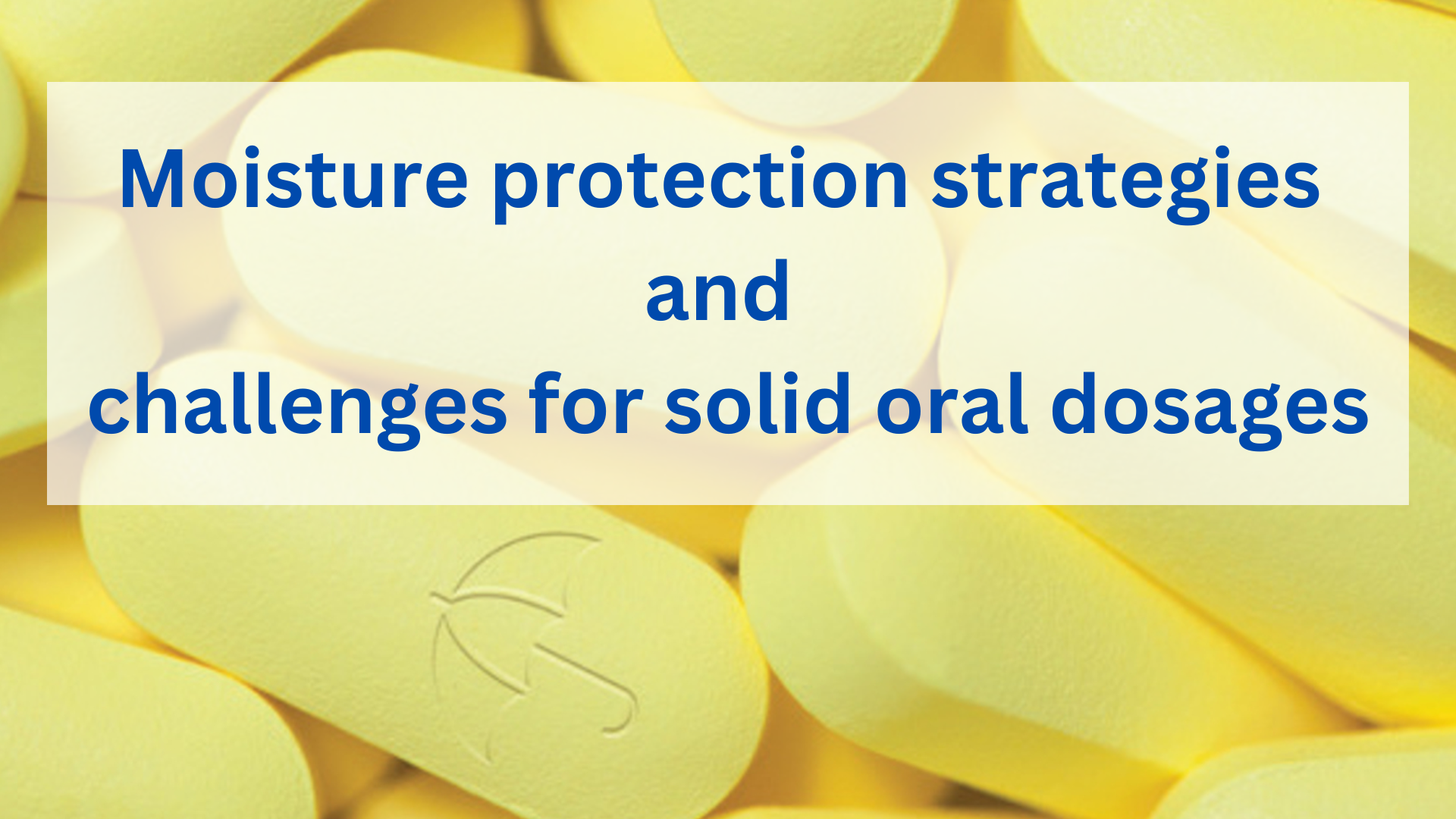Moisture protection strategies and challenges for solid oral dosages

Protecting moisture sensitive substances from environmental moisture is one of the biggest challenges in the pharmaceutical and nutritional supplements industry. Coating the tablet core with a suitable film coating therefore plays an important role in achieving a sufficient moisture barrier. It improves the stability of the tablet and provides protection to prevent degradation of the active ingredients and increases shelf life. Tablet cores with highly hygroscopic active ingredients, such as extracts, or solid dosage forms marketed in countries with high humidity, must be protected from moisture effectively.
Moisture can have a severe impact on the stability of active pharmaceutical ingredients (API) within pharmaceutical dosage forms. Mostly the active ingredients, but also some excipients, might be prone to degradation processes due to hydrolysis. Choosing the ideal dosage form is essential to ensure API stability. Most often solid dosage forms (e.g. tablets or capsules) are a good choice due to their low water content. The next step in moisture protection strategy is to pick the right excipients for the formulation effort. To protect the dosage forms directly against moisture once removed from the packaging special coatings offer the best and easiest route to stop entry of water into the dosage form. Polymers used for moisture protection coatings include HPMC (Hydroxypropylmethyl Cellulose) and PVA (Polyvinyl Alcohol). These polymers are used on their own or in combination with hydrophobic additives such as fatty acids or the salts thereof.
One easy way to use the right coating formulation for a particular tablet core or active ingredient is to work with ready-to-use film coating systems tailored to the user’s requirements. Whether it should be clear, white or colored. Modern coating formulations should meet current and future regulatory requirements. For example, AquaPolish® MS, a ready-to use film coating premix, can be formulated both with and without titanium dioxide. The TiO2-free formulations achieve the usual degree of whiteness as well as the necessary opacity, for example, to homogeneously color even dark tablet cores.
Interested in more information about BIOGRUND film coatings or a sample?

